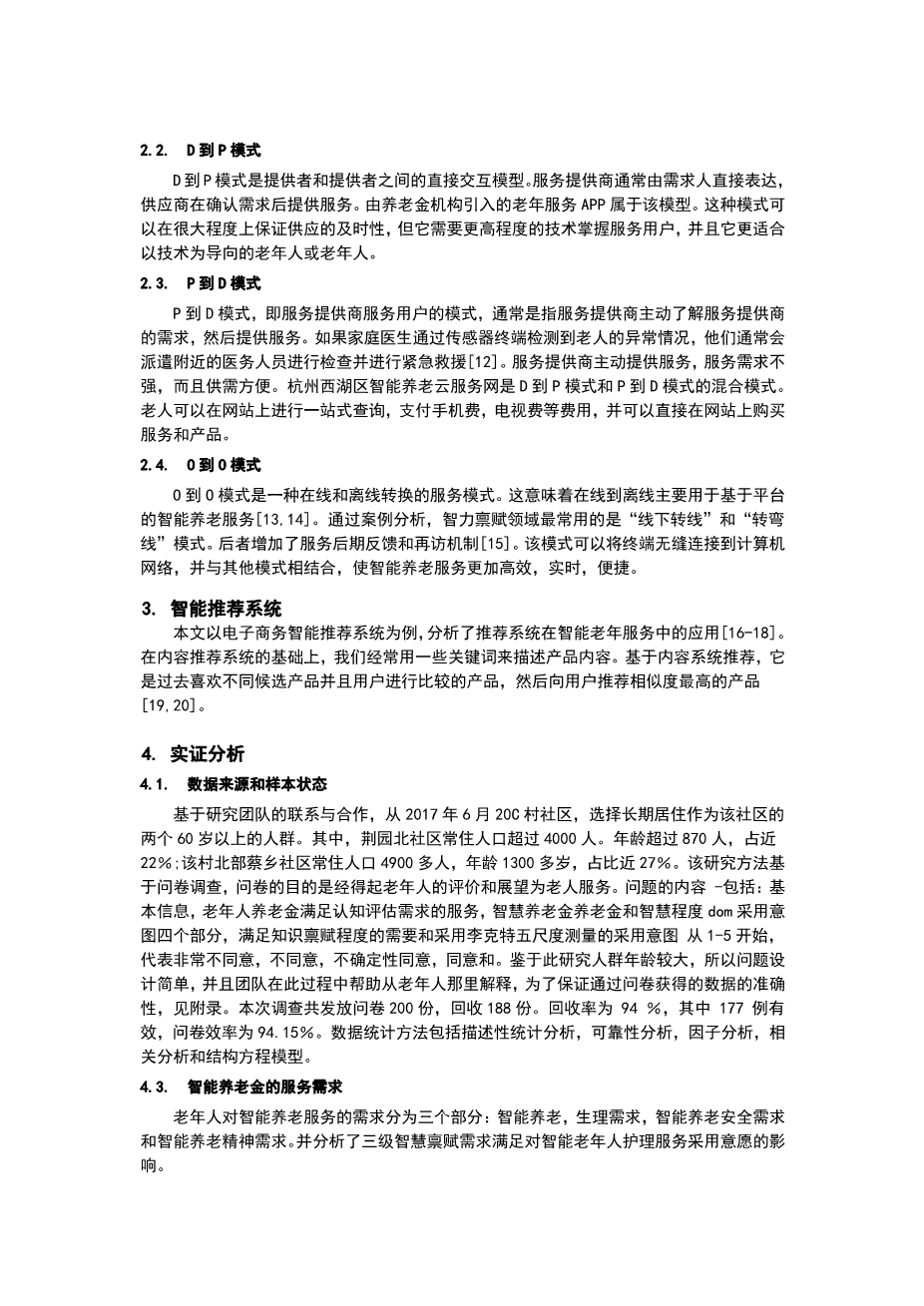Research on the realization path of smart old-age care in Suzhou based on intelligent recommendation system
Abstract.
The proper integration of the fuzzy clustering and neural network will help to enhance the accuracy of recommendation system. In this paper, the author designed an intelligent recommendation system and analyzed its application in smart old-age care. In the content-based recommendation system, we describe frequently the product content with some key words, and this could also be used in the home-based care services. by using chaotic neural network model, we analyze the user behavior and the recommended quality. The results show that the large data can provide accurate service supply for the elderly with different pension modes at different levels of pension services. At the same time, through the online platform, the intelligent computing and decision-making function of the aged service can be realized.
Keywords: Intelligent recommendation, user behaviour mining, smart old-age care, o2o model, big data
1. Introduction
The aging of the population has become an important problem in the process of economic and social development in China [1]. But at present, the pension funds are limited, the old-age products are single, the content of the old-age service is monotonous, and the service level is not high, which makes the old age of our country facing enormous pressure. With the rapid development of information network technology and the wide application of new technologies such as Internet of things, big data and cloud computing, the pension industry is also stepping into the new era of smart endowment. Wisdom pension aimed at using the Internet, Internet of things, big data and cloud computing technology, enhanced pension services, Internet of things and intelligent home for the elderly, the elderly and the elderly in the community organization IOT system and information platform for the elderly to provide real-time, fast and efficient and the low cost of pension services. Suzhou has made preliminary exploration in the field of intelligent endowment, but there are still many problems, such as lack of top-level design, lagging behind in information construction, single product and imperfect policies. Therefore, how to use “wisdom endowment” mode, the introduction of market resources endowment service team, explore the pension services, pension services to solve the distribution problem of the use of modern network technology, improve the happiness of the elderly, has become a hot issue of common concern.
2. Intelligent pension model
The rise of intellectual endowment makes the components of the old-age service complex and need to use new standards to describe the service model. From B2B, B2C and other electronic commerce classification, wisdom pension service model not only online, but also to expand the line of mutual con-version, on-line therefore, based on the literature review, summarized the Yangtze River Delta region of Ningbo, Nanjing, Shanghai, Hangzhou and other typical wisdom pension mode, will be divided into four categories: That is, DMP mode, D to P mode, P to D mode, and O to O mode.
2.1. DMP mode
The DMP mode is the pattern of the Demander to the mediator and then to the provider. In this model, the demand person reflects the service demand to the service intermediary platform, and then the service provider provides the service provider with the service provider. This model has been applied in the call center to help many of the city’s pension service hot-line. As an intermediary, platform plays a role of Communication Bridge, which can quickly and easily collect demand information, greatly improve the real-time performance of service and achieve rapid response. At the same time, the intermediary platform can play a pivotal role, such as pension service information system of Xihu District has established the elderly information database based on the unity of the body, evaluation, the elderly service subsidy application and auditing, government subsidies allocated the entire digital reconstruction and settlement, emergency call service and management . DMP mode has wide adaptability and can be applied in disabled elderly people. However, there may be some problems such as lack of timely response and barriers to artificial communication. This mode has higher requirement for platform construction. How to make information transmission work with limited manpower and high efficiency and monitor and evaluate service quality is a challenge when the demand is full.
2.2. D to P mode
The D to P pattern is a direct interaction model between the provider and the provider. The service provider is usually expressed directly by the demand person, and the supplier provides the service after the requirement is confirmed. The old-age service APP, which is introduced by the pension institution, belongs to this model. This mode can largely guarantee the timeliness of supply, but it requires higher degree of technology mastery for service users, and it is more suitable for the elderly or the elderly who are guided by technology.
2.3. P to D mode
P to D mode, which means a pattern of service providers to service users, usually refers to the ser-vice providers’ initiative to understand the needs of service providers, and then to provide services. If the family doctor detected the abnormal situation of the old people through the sensor terminal, they usu-ally send the nearby medical staff to check and make emergency rescue. Service providers take the initiative to give service, the service demand is not strong, and it is easy to supply and demand. Hangzhou Xihu District intelligent endowment cloud service network is a hybrid mode of D to P mode and P to D mode. The elderly can carry out one-stop inquiries on the we
全文共27238字,剩余内容已隐藏,支付完成后下载完整资料


英语译文共 5 页,剩余内容已隐藏,支付完成后下载完整资料
资料编号:[453084],资料为PDF文档或Word文档,PDF文档可免费转换为Word


